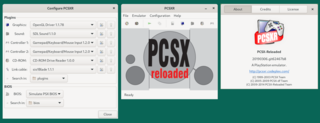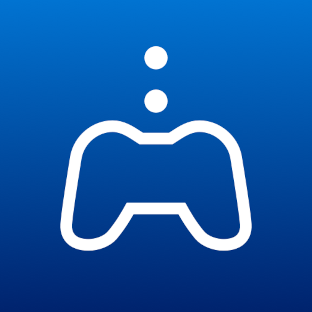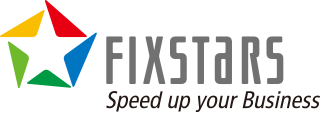
The PlayStation 3 (PS3) is a home video game console developed and marketed by Sony Interactive Entertainment. The successor to the PlayStation 2, it is part of the PlayStation brand of consoles. It was first released on November 11, 2006, in Japan, November 17, 2006, in North America, and March 23, 2007, in Europe and Australia. The PlayStation 3 competed primarily against Microsoft's Xbox 360 and Nintendo's Wii as part of the seventh generation of video game consoles.

Yellow Dog Linux (YDL) is a discontinued free and open-source operating system for high-performance computing on multi-core processor computer architectures, focusing on GPU systems and computers using the POWER7 processor. The original developer was Terra Soft Solutions, which was acquired by Fixstars in October 2008. Yellow Dog Linux was first released in the spring of 1999 for Apple Macintosh PowerPC-based computers. The most recent version, Yellow Dog Linux 7, was released on August 6, 2012. Yellow Dog Linux lent its name to the popular YUM Linux software updater, derived from YDL's YUP and thus called Yellowdog Updater, Modified.

The PlayStation Portable (PSP) is a handheld game console developed and marketed by Sony Computer Entertainment. It was first released in Japan on December 12, 2004, in North America on March 24, 2005, and in PAL regions on September 1, 2005, and is the first handheld installment in the PlayStation line of consoles. As a seventh generation console, the PSP competed with the Nintendo DS.
Cell is a 64-bit multi-core microprocessor microarchitecture that combines a general-purpose PowerPC core of modest performance with streamlined coprocessing elements which greatly accelerate multimedia and vector processing applications, as well as many other forms of dedicated computation.

Linux for PlayStation 2 is a kit released by Sony Computer Entertainment in 2002 that allows the PlayStation 2 console to be used as a personal computer. It included a Linux-based operating system, a USB keyboard and mouse, a VGA adapter, a PS2 network adapter, and a 40 GB hard disk drive (HDD). An 8 MB memory card is required; it must be formatted during installation, erasing all data previously saved on it, though afterwards the remaining space may be used for savegames. It is strongly recommended that a user of Linux for PlayStation 2 have some basic knowledge of Linux before installing and using it, due to the command-line interface for installation.
Various accessories for the PlayStation 3 video game console have been produced by Sony and third-party companies. These include controllers, audio and video input devices like microphones, video cameras, and cables for better sound and picture quality.

PCSX is a free and open-source, video game console emulator that allows software designed to be used with the Sony PlayStation to run on personal computers. Over the years, development changed hands several times with PCSX-Reloaded (PCSXR) now being the main version. As of 2021, the emulator seems to be no longer under active development. A newer, actively maintained fork of PCSX-Reloaded is PCSX-Redux.

Remote Play is a feature of Sony video game consoles that allow the PlayStation 3, PlayStation 4 and PlayStation 5 to transmit video and audio output to another device; previously this could only be a PlayStation Portable or PlayStation Vita. In 2014, it was expanded to include the use of PlayStation TV, Xperia smartphones and tablets, and PlayStation Now. In 2016, it was expanded to Microsoft Windows PCs and macOS. In 2019, support for Android and iOS devices was eventually added. Support for remote play of PlayStation 5 games to other devices was added in November 2020 just prior to the new console's launch.
OtherOS is a feature of early versions of the PlayStation 3 video game console, allowing user installed software, such as Linux or FreeBSD. The feature was removed since system firmware update 3.21, released on April 1, 2010.

The PlayStation Eye is a digital camera device, similar to a webcam, for the PlayStation 3. The technology uses computer vision and gesture recognition to process images taken by the camera. This allows players to interact with games using motion and color detection as well as sound through its built-in microphone array. It is the successor to the EyeToy for the PlayStation 2, which was released in 2003.

The PlayStation 3 system software is the updatable firmware and operating system of the PlayStation 3. The base operating system used by Sony for the PlayStation 3 is a fork of both FreeBSD and NetBSD known internally as CellOS or GameOS. It uses XrossMediaBar as its graphical shell.
The seventh generation of home video game consoles began on November 22, 2005, with the release of Microsoft's Xbox 360 home console. This was followed by the release of Sony's PlayStation 3 on November 17, 2006, and Nintendo's Wii on November 19, 2006. Each new console introduced new technologies. The Xbox 360 offered games rendered natively at high-definition video (HD) resolutions, the PlayStation 3 offered HD movie playback via a built-in 3D Blu-ray Disc player, and the Wii focused on integrating controllers with movement sensors as well as joysticks. Some Wii controllers could be moved about to control in-game actions, which enabled players to simulate real-world actions through movement during gameplay. By this generation, video game consoles had become an important part of the global IT infrastructure; it is estimated that video game consoles represented 25% of the world's general-purpose computational power in 2007.

The PlayStation 3 technical specifications describe the various components of the PlayStation 3 (PS3) video game console.
PlayStation is a video gaming brand that consists of five home video game consoles, two handhelds, a media center, and a smartphone, as well as an online service and multiple magazines. The brand is produced by Sony Interactive Entertainment, a division of Sony.

The PlayStation 2 (PS2) is a home video game console developed and marketed by Sony Computer Entertainment. It was first released in Japan on 4 March 2000, in North America on 26 October 2000, in Europe on 24 November 2000, and in Australia on 30 November 2000. It is the successor to the PlayStation (console), as well as the second installment in the PlayStation brand of consoles. As a sixth-generation console, it competed with Nintendo's GameCube, Sega's Dreamcast, and Microsoft's Xbox. It is the best-selling video game console of all time, having sold over 155 million units worldwide, nearly triple the combined sales of the Dreamcast, GameCube, and Xbox.

A computer cluster is a set of computers that work together so that they can be viewed as a single system. Unlike grid computers, computer clusters have each node set to perform the same task, controlled and scheduled by software. The newest manifestation of cluster computing is cloud computing.

Fixstars Solutions, Inc. is a software and services company specializing in multi-core processors, particularly in Nvidia's GPU and CUDA environment, IBM Power7, and Cell. They also specialize in solid-state drives and currently manufacture the world's largest SATA drives.
The PlayStation 4 technical specifications describe the various hardware components of the PlayStation 4 home video game console group. Multiple versions of this console have been released since the initial launch of the PlayStation 4, including the PlayStation 4 Slim and the PlayStation 4 Pro. Subsequent versions include changes to the technical specifications of the console.
The PlayStation 3 (PS3) video game console has been produced in various models during its life cycle. At launch, the PlayStation 3 was available with either a 20 or 60 GB hard disk drive in the US and Japan, respectively— priced from US$499 to US$599; and with either a 40, 60, or 80 GB hard disk drive in Europe, priced from £299 to £425. Since then, Sony have released two further redesigned models, the "Slim" and "Super Slim" models. As of March 2017, the total number of consoles sold is estimated at 87.4 million.
Homebrew software was first run on the PlayStation 3 by a group of hackers under the name "Team Ice" by exploiting a vulnerability in the game Resistance: Fall of Man. Following various other hacks executed from Linux, Sony removed the ability to install another operating system in the 3.21 firmware update. This event caused backlash among the hacker communities, and eventually the group Fail0verflow found a flaw in the generation of encryption keys which they leveraged to restore the ability to install Linux. George Hotz (Geohot), often misattributed as the genesis of homebrew on the PS3, later created the first homebrew signed using the private "metldr" encryption key which he leaked onto the internet. Leaking the key led to Hotz being sued by Sony. The court case was settled out of court, with the result of George Hotz not being able to further reverse engineer the PS3.











